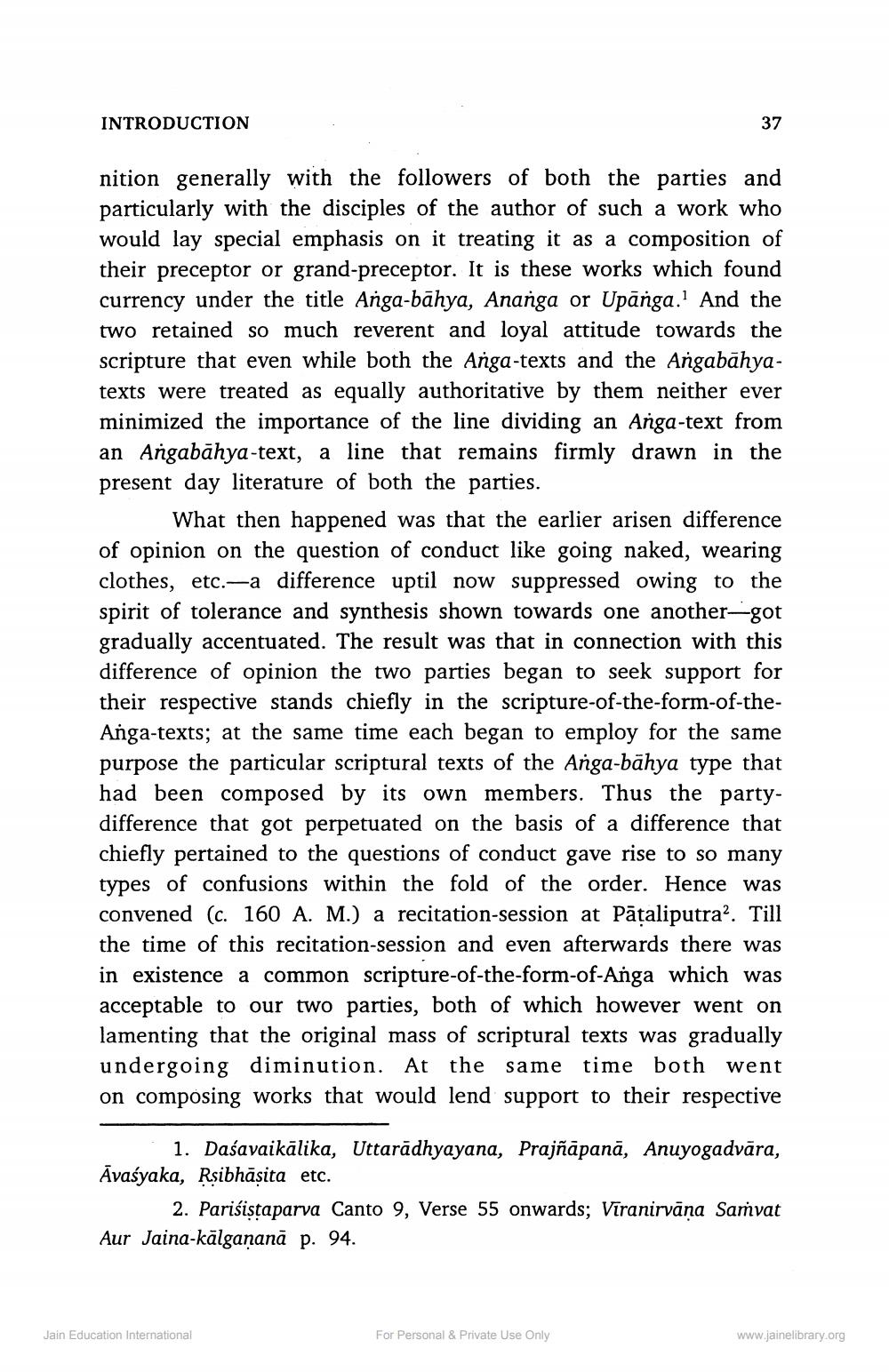________________
INTRODUCTION
nition generally with the followers of both the parties and particularly with the disciples of the author of such a work who would lay special emphasis on it treating it as a composition of their preceptor or grand-preceptor. It is these works which found currency under the title Anga-bahya, Ananga or Upanga.' And the two retained so much reverent and loyal attitude towards the scripture that even while both the Anga-texts and the Angabāhyatexts were treated as equally authoritative by them neither ever minimized the importance of the line dividing an Anga-text from an Angabahya-text, a line that remains firmly drawn in the present day literature of both the parties.
37
What then happened was that the earlier arisen difference of opinion on the question of conduct like going naked, wearing clothes, etc.-a difference uptil now suppressed owing to the spirit of tolerance and synthesis shown towards one another-got gradually accentuated. The result was that in connection with this difference of opinion the two parties began to seek support for their respective stands chiefly in the scripture-of-the-form-of-theAnga-texts; at the same time each began to employ for the same purpose the particular scriptural texts of the Anga-bahya type that had been composed by its own members. Thus the partydifference that got perpetuated on the basis of a difference that chiefly pertained to the questions of conduct gave rise to so many types of confusions within the fold of the order. Hence was convened (c. 160 A. M.) a recitation-session at Pātaliputra2. Till the time of this recitation-session and even afterwards there was in existence a common scripture-of-the-form-of-Anga which was acceptable to our two parties, both of which however went on lamenting that the original mass of scriptural texts was gradually undergoing diminution. At the same time both went on composing works that would lend support to their respective
1. Dasavaikālika, Uttarādhyayana, Prajñāpanā, Anuyogadvāra, Avasyaka, Rṣibhāṣita etc.
2. Parisiṣṭaparva Canto 9, Verse 55 onwards; Vīranirvāņa Samvat Aur Jaina-kälgaṇanā p. 94.
Jain Education International
For Personal & Private Use Only
www.jainelibrary.org




